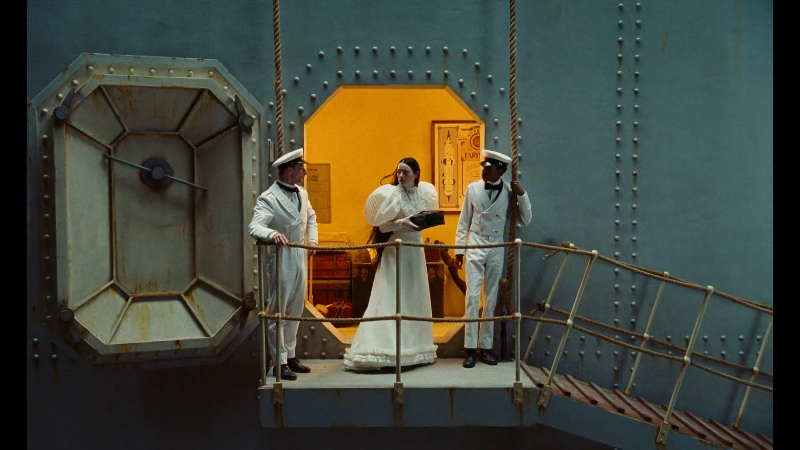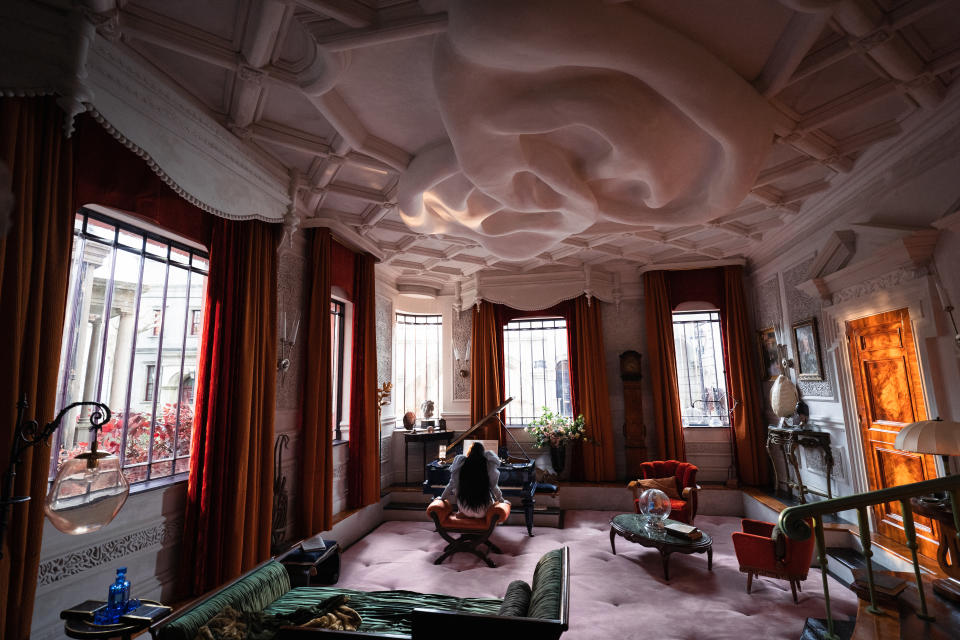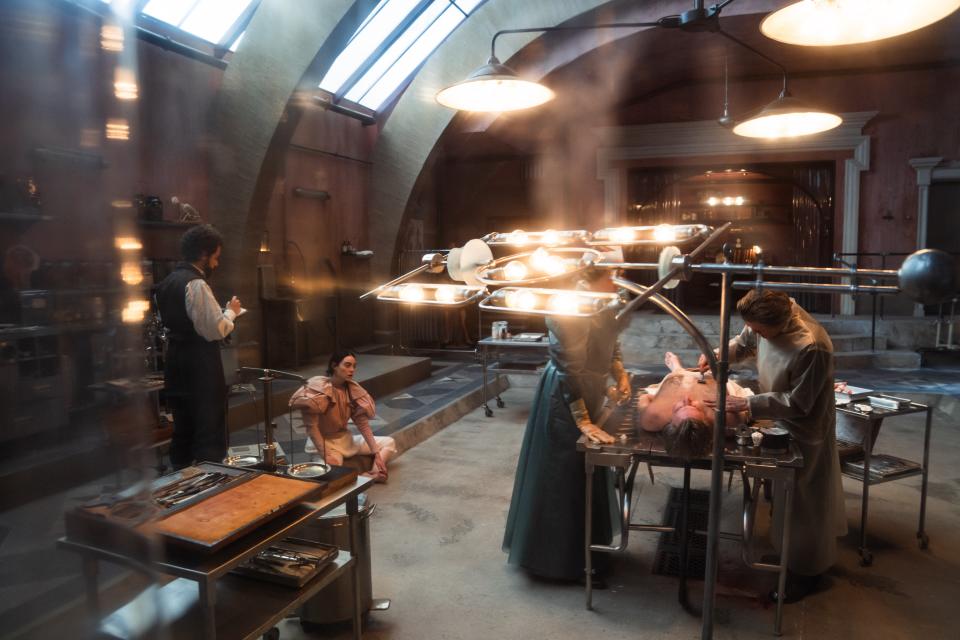‘Unlike Anything That’s Ever Existed Before’: Inside the Surreal Sets of ‘Poor Things’

In Yorgos Lanthimos’ “Poor Things,” 19th-century scientist Baxter (Willem Dafoe) restores Bella (Emma Stone) to life with the brain of her unborn child — and the surreal visual design reflects her wild imagination as she progresses from infant to liberated woman.
To achieve that, the director instructed production designers James Price (“Paddington 2” art director) and Shona Heath (a collaborator of fashion photographer Tim Walker making her film debut) to create a fantastical world that was a throwback to the old-school style of Michael Powell and Emeric Pressburger’s “Black Narcissus,” with miniatures, painted backdrops, and rear screen projection (high-tech LED screens created the oceans and skies).
More from IndieWire
“My experience in film is zero,” Heath said in an on-set interview in the video above, “so this wouldn’t be standing if it wasn’t for James.”
What they conjured — to Arts Director Guild- and Academy Award-nominated success — was a retro-futuristic fantasy influenced by the satirical drawings of Albert Guillaume during the Belle Epoque era in Paris and the absurdist films of Swedish director Roy Andersson (“Songs from the Second Floor”). They shot on the soundstages of Origo Studios in Budapest (London, the ocean liner ship, the Alexandria hotel and slums, and Paris) and at Korda Studios in Budapest for Lisbon, with its composite sets and flying trams on ceiling pole rigs.
“It had to be through [Bella’s] eyes, which really could be anything,” Heath told IndieWire. “We can use plastics and we can use flying trams, we weren’t inhibited like she’s not inhibited. We were allowed to create our world at our fancy.”

“What the production design leads have created is something unlike anything that’s ever existed before that I’ve seen,” Stone said in the new behind-the-scenes featurette video above. Having never worked together, Price and Heath found their collaboration to be complementary between Price’s cinematic background and Heath’s photographic expertise. “Working with Shona was like being back at art school,” Price told IndieWire. “I’ve done a lot of film over the last 20 years but telling photorealistic stories, and Shona’s brilliant at coming at it from left field. And so we came at it very differently. I start with more of a global sense of the idea and Shona starts with detail. We would be very fluid and work one day on Lisbon each, and then we’d swap it over and take a drawing and cut it up and stick bits together and get this handmade feel that Yorgos kept talking about.”
The worlds were fairy tale recreations of Bella’s mind but interactive and immersive so you could walk from one set to another. This also gave cinematographer Robbie Ryan lots of space to move around. Bella gets lost in Lisbon, which was like a theme park with steel-frame buildings around sloping cobblestone streets and a 60-foot-high painted backdrop. Alexandria was built as two sets (the interior of the restaurant and balcony overlooking the center of the slum), painted backdrop, and wide miniature. Wintry Paris was out of an Edgar Degas painting with a sense of calm, while the brothel was a joke in itself with phallic windows and cravings of naked women.
But the most creative fun was Baxter’s oddly shaped house (shot in black-and-white for Bella’s feral emergence and later in color for her return as an adult). The design, with its long hallway, was inspired by architect John Stone, who liked to cut into walls and open designs up. It was an idea that seemed perfectly suited to Baxter’s penchant for grafting.

“The house was from Baxter’s mind,” Heath said. “We thought that, being the architect of his own house and his own home, he would have approached it like he approached his subjects. We built with cues from the script, really, to add sort of humor and detail that would make our world something else.
“The stairs were fairly dangerous, and there was a sort of gangway that made no sense,” she continued. “There were tiny viewing galleries to view Bella from outside her room, and the roof of the atrium in the hallway was like the roof of a mouth. It was very bodily and the lounge had two gigantic, sculptural ears interlocking, and the floor was kind of squishy because we thought it would be fun to add this kind of weird slowness when people walked or moved in that space, like another dimension. It drove everybody crazy, and I don’t think it made Robbie’s life very easy.”
Best of IndieWire
Where to Watch This Week's New Movies, Including 'Argylle' and 'How to Have Sex'
Christopher Nolan's Favorite Movies: 40 Films the Director Wants You to See
Sign up for Indiewire's Newsletter. For the latest news, follow us on Facebook, Twitter, and Instagram.

 Yahoo News
Yahoo News 
